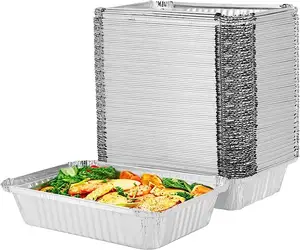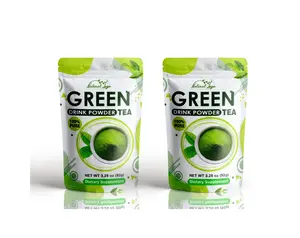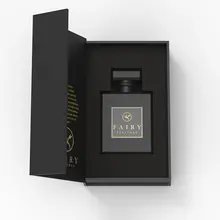What are Foil Containers
Foil containers, typically made from aluminum foil or aluminum alloy, represent a category of packaging solutions widely used for food storage and transportation. These containers are popular in the food industry due to their lightweight nature, ability to conduct heat evenly, and their resistance to contamination. They are ideal for a range of users from catering services, takeout restaurants, bakeries, to home cooks who need reliable food storage options.
The principle behind foil containers is to provide a secure environment for food items that preserves freshness, prevents leaks, and withstands various temperatures. They are designed to be oven-safe, making them suitable for cooking and reheating, and are also freezer-friendly for long-term storage. The versatility of foil containers is further enhanced by their recyclability, aligning with eco-friendly practices favored by both businesses and consumers.
These containers come in a multitude of shapes and sizes to accommodate different food types and portions. The manufacturing process typically involves pressing sheets of aluminum into the desired shape through a molding process. Some containers may feature additional coatings or treatments to enhance their performance, such as being non-stick or extra resistant to heat. Due to their disposable nature, foil containers offer convenience as they eliminate the need for washing, thus saving time and water.
Types of Foil Containers
Foil containers are designed to meet various requirements in the food packaging and serving industry. They come in several types that cater to distinct needs:
Flat Trays: Often used for baking or grilling, these trays are designed for even cooking and can easily go from oven to table. Commonly used for items like cookies, rolls, or grilling vegetables.
Compartmental Containers: Featuring multiple sections within one container, these are perfect for meals that require separation of components like entrées with sides. They're often seen in canteens or for meal kit deliveries.
Round Containers: Ideal for single-serving dishes such as pies or cakes, round foil containers can also be used for foods that need to be easily unmolded.
Rectangular Containers: With their versatile shape, these are used extensively in takeout services for packing everything from entrees to desserts. Their stackable nature makes them convenient for transport.
Specialty Containers: These include uniquely shaped containers such as heart-shaped pans for special occasions or elongated containers specifically designed for items like breadsticks.
How to choose Foil Containers
Selecting the right foil container is crucial for businesses as it impacts not only the quality of food but also operational efficiency. Here are some considerations when choosing foil containers:
Material and Feature: Businesses should ensure the foil containers are made from food-grade material and possess features like eco-friendliness and recyclability if sustainability is a priority. Aluminum is preferred due to its superior thermal properties and compatibility with various temperatures.
Processing Type and Plastic Type: Depending on the method of food preparation or presentation requirements, businesses may opt for either pulp moulding or blister processing types. The choice of plastic type (PET, PP, PE, PVC) will depend on the specific needs such as clarity of visibility or rigidity.
Use and Application: The intended use – whether it's for a takeaway service or high-end catering – will guide the selection of the container shape and size. For instance, an airline might require compact containers with secure lids while a fast-food outlet would prefer larger trays that facilitate quick service.
Printing Handling and Surface Handling: Aesthetics can be important in packaging; hence printing handling options like glossy lamination or UV coating might be chosen to enhance brand presentation. Surface handling techniques may also be considered if branding or labeling is required on the container itself.
Best Foil Containers on Alibaba.com
Alibaba.com is an invaluable resource for businesses seeking a vast array of foil container options. With a comprehensive selection accommodating different materials such as aluminum foil and kraft paper, Alibaba.com caters to diverse industrial uses including food storing and serving in restaurants or during flight catering services. Users have the convenience of filtering through features such as eco-friendliness or disposability to find products that align with their business ethos.
The platform's global reach connects buyers with suppliers from around the world offering products tailored to specific needs – be it color preferences like silver or processing types like pulp moulding or blister. Alibaba.com's commitment to facilitating smooth transactions is evident in services like Trade Assurance which ensures payment protection until delivery completion.
Moreover, as Alibaba.com understands the importance of trust in B2B transactions, buyers can confidently navigate through various suppliers' offerings knowing that quality and reliability are key considerations on this platform. This dedication to fostering seamless trade experiences makes Alibaba.com an excellent choice for sourcing wholesale foil containers suited for any business requirement.
Common FAQs for Foil Containers
What types of food are suitable for foil containers?
Foil containers are versatile and can be used for a wide range of food items including baked goods, cooked entrees, frozen desserts, and more. They are suitable for both hot and cold foods.
Can foil containers be used in the microwave?
Aluminum foil containers should not be used in the microwave as metal can cause sparks and potentially fire. Instead, they are ideal for conventional ovens and grills.
Are foil containers recyclable?
Yes, aluminum foil containers are recyclable. However, it's important to clean them of any food residue before recycling to avoid contamination.
How do I choose the right size and shape for my business needs?
Consider the type of food you are serving, portion sizes, and how the containers will be used (for example, for takeout or in-house dining). Round containers are often used for single servings, while larger rectangular ones are better suited for family-sized meals or bulk foods.
What features should I look for in a foil container if my business focuses on eco-friendliness?
Look for containers labeled as recyclable or eco-friendly, and consider those made from recycled materials. Additionally, check if they are marked as food-grade to ensure safety.
How can I ensure the foil containers I use maintain food safety standards?
Choose containers that specify they are food-grade material and comply with relevant health regulations. Also, ensure that they are used within their temperature-safe range for cooking and storage.
Can I customize foil containers with my business logo or branding?
While specific customization services vary by supplier, many offer printing handling options such as screen printing or UV coating that allow for customization of foil containers with logos or branding.
What is the difference between hard temper and half hard temper in foil containers?
Hard temper foil is stiffer and more rigid, making it suitable for heavy-duty use, while half hard temper offers more flexibility, which can be beneficial for sealing or covering dishes.
Are there any lids available specifically designed to fit foil containers?
Many suppliers offer lids that match their foil container products, including flat board lids and domed plastic lids that provide secure sealing options for storage and transportation.
What considerations should I make when using foil containers for takeout services?
Choose leak-resistant designs with secure lids to prevent spills during transport. You may also want to consider insulated bags or additional packaging to maintain temperature until delivery.










































 浙公网安备 33010002000092号
浙公网安备 33010002000092号 浙B2-20120091-4
浙B2-20120091-4